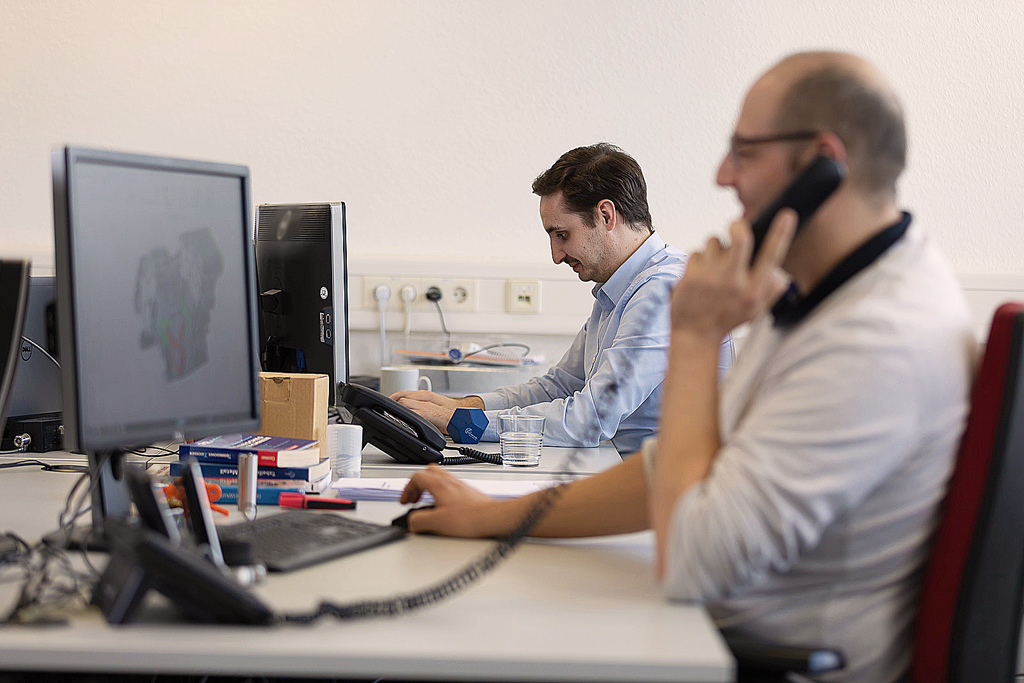// Virtual Drivetrain
From Vehicle Concept to Development
Cost-Reducing Simulations and Models
APL uses simulations and models at every stage of the product development process and life cycle. This not only reduces development costs, but also opens up new possibilities for supporting individual subtasks or accompanying the entire development process. Physical, hybrid and empirical models are used during this process.
Would you like to learn more about our competencies in virtual drivetrain development? Then click here for an excerpt from our portfolio.
Disciplines of Virtual Drivetrain Engineering
CAD
Complex 3D models are created with the latest CAD design tools. From new design concepts on a white sheet of paper to modification and adaptation services and reverse engineering of existing hardware, we design your and our ideas.
Structural Mechanics of Individual Components and Assembly Units
APL covers all common fields of structural mechanics such as strength and stiffness analysis of single components as well as drive assemblies of all kinds. Intelligent topography optimisation for weight reduction as well as simulations of NVH behaviour complete our portfolio.
Thermomechanics of Components
Thermomechanical calculations provide valuable information on the expansion and distortion behaviour of drive components in operation. In particular, the focus lies on thermally highly stressed components such as crankcases and exhaust systems, but increasingly also on cooling systems (for example in traction batteries of electric vehicles or fuel cell-based systems).
Dynamic Simulation
Tribology — Friction and Abrasion
Fluid Mechanics
Wherever liquids flow, CFD calculation becomes part of the equation. Issues such as gas exchange, carburetion, uniform flow distribution, combustion and exhaust gas aftertreatment are dealt with, as well as the thermal management of traction batteries and fuel cell-based systems – including cavitation-critical areas on components around which liquids flow. Depending on the operation purpose, we use 2D or 3D models as well as single-phase or multi-phase simulation approaches.
Electromagnetics and Electronics
Electrochemistry
Further optimization of fuel cell drives requires a fundamental understanding of the electrochemical processes inside a fuel cell. Many years of experience gathered by specialists working at APL allow for a comprehensive characterization of functional and loss mechanisms that occur. Combining the latest simulation and diagnostic tools we daily generate value for our customers on the path to a durable, highly efficient and at the same time inexpensive, emission free drive system.
Multiphysics
System Simulation
APL uses 0D and 1D approaches to represent the various subcomponents on a system basis. Examples are oil, cooling, battery and injection systems on subsystem level or complete vehicle models for internal combustion, hybrid, fuel cell and electric drives.
Real-Time Simulations
Systematic Variation and Optimisation
// Locations
Headquarters Landau
APL Automobil-Prüftechnik
Landau GmbH
Am Hölzel 11
76829 Landau
// Wolfsburg
APL Automobil-Prüftechnik
Landau GmbH
Gustav-Hertz-Straße 10
38448 Wolfsburg
// Bietigheim-Bissingen
APL Automobil-Prüftechnik
Landau GmbH
Robert-Bosch-Straße 12
74321 Bietigheim-Bissingen
// APL Group
@2022 APL Automobil-Prüftechnik Landau GmbH | Imprint | Privacy policy










